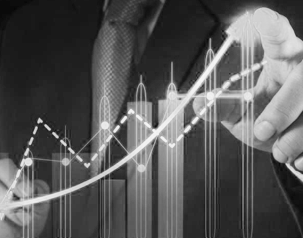Modelling was a factor in driving the direction of Australia's response as the country entered the COVID-19 pandemic and one global expert says it will be even more critical in planning and implementing the exit.
Commonwealth Chief Medical Officer Professor Brendan Murphy released the Doherty Institute's modelling last week.
The modelling used "clinical pathway models developed over many years in preparation for influenza pandemics" and was significantly based on the spread of COVID-19 in Wuhan - the use of Wuhan highlights the challenge of modelling a pandemic before it hits a country.
Wuhan has few similarities to any Australian town or region. It is in China's Hubei province and has a high-density population of just over 11 million people. The city covers an area that is around half the size of Brisbane, a city with a population of around two million. Hubei province has a population of just under 60 million and covers an area that would comfortably fit within the borders of Victoria.
Another key difference is Australia's highly resourced and universal public health system.
The Doherty Institute was commissioned by the Department of Health to model COVID-19. It used Wuhan's experience to model the impact of the spread of the virus on Australia's health system and the potential ameliorating impact of mitigation strategies like social distancing and quarantine.
It essentially makes the case for 'flattening the curve'.
According to the modelling's 'unmitigated' scenario, under which no containment measures are formally adopted and imposed, 90 per cent of Australia's population would contract the virus. The numbers would peak 18 weeks after the first confirmed case.
Based on Wuhan, it also assumed 20 per cent of COVID-19 cases would be "severe disease" and require hospitalisation with 5-16 per cent of these patients treated in a hospital intensive care unit.
The first Australian case of COVID-19 was confirmed in late January. This means according to the modelling's 'unmitigated' scenario, by mid-May around 35,000 Australians would be presenting to hospital intensive care units (ICU) on a daily basis.
At the time the modelling was done, it assumed 50 per cent of Australia's ICU capacity would be made available for COVID-19 patients - that is 1,114 ICU beds. The implication of the 'unmitigated' scenario is very clear.
Professor Murphy described the modelling as "highly technical". He said it could only be understood by people with "scientific brains".
The modelling assumed one base scenario with limited variations for the spread of the virus - acknowledged by Professor Murphy as the "theoretical" worst-case - and only considered the aggregate benefit of social distancing and quarantine.
It did not model alternative 'unmitigated' scenarios or the impact of individual social distancing measures.
The modelling acknowledged but did not factor the potentially harmful effects of social distancing measures such as those that are now becoming evident in the significant decline in people maintaining contact with healthcare professionals on the management of their chronic conditions. Last week, The Royal College of Pathologists of Australasia reported a 60,000 fall in daily pathology tests.
According to the modelling's 30-page draft research paper, "They also acknowledge that the marked social and economic consequences of such measures [social distancing] will limit their ongoing application, particularly in the settings where health systems are least able to cope with disease burden."
Professor Murphy essentially downplayed the model's application to Australia but he did say it was significantly used to guide Australia's response to COVID-19, particularly in relation to health system capacity.
Professor Murphy said the Doherty Institute was working to produce an Australia-specific COVID-19 model. Ironically, he indicated its development had been impacted by the small number of community-based transmissions, with the vast majority of confirmed cases in Australia related to overseas travel.
The limited availability of modelling based on the local COVID-19 experience could be posing a challenge for decision-makers, particularly given Professor Murphy has in recent days indicated the government could lift some social distancing measures within weeks.
According to Professor Steven Riley of the Imperial College London, detailed modelling on the impact of individual social distancing measures will be critical for governments and policy-makers in deciding the timing and process for an 'exit' from the current restrictions.
He said current lockdowns across countries are slowing the spread of COVID-19 but the approach is "very crude" and not sustainable. "The challenge is to come up with more innovative and focussed measures to avoid another lockdown after the exit," said Professor Riley in a statement.
He also said testing for COVID-19 is critical because it will help identify vulnerable populations.
Australia has amongst the highest rate of testing for COVID-19 in the world. According to the global research organisation, Our World in Data, Australia is only just behind countries like Italy and Germany in terms of tests per 1,000 people (~13) and well ahead of others like South Korea.
Health minister Greg Hunt said yesterday the National Cabinet is planning an 'exit' that would be gradual and based on evidence and advice.
